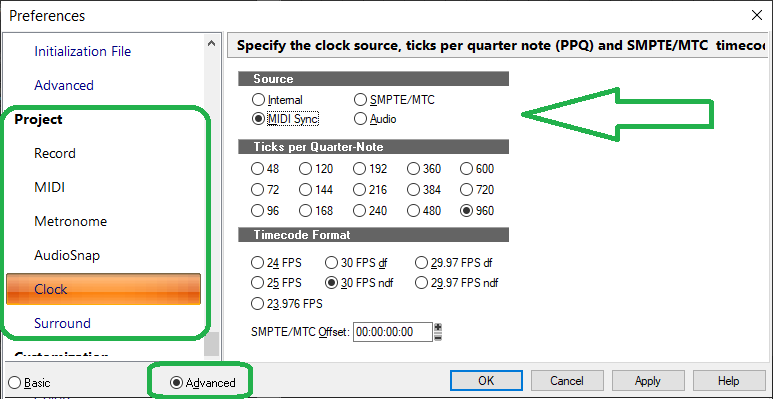-
Posts
6,060 -
Joined
-
Days Won
1
Everything posted by user905133
-

Recording from dedicated MIDI sequencer into Bandlab Cakewalk
user905133 replied to tdehan's topic in Cakewalk by BandLab
Why didn't you say so BEFORE I did the research? LOL. -

Recording from dedicated MIDI sequencer into Bandlab Cakewalk
user905133 replied to tdehan's topic in Cakewalk by BandLab
NO I found a copy of the manual here. I did not see any place where the manual says it outputs MIDI timing commands, but I just took a quick look at several sections related to the sequencer and song mode. (Maybe its in a separate MIDI Implementation sheet/guide.) The manual does talk about controlling the SY77's sequencer from an external sequencer. (See for example page 197: MIDI Control.) It would be good to find out if it outputs MIDI timing bytes. If it doesn't, perhaps you will be able to control the SY77's sequencer from Cakewalk. If you use a midi monitor from the SY77, does it show timing data being sent? UPDATE: I found the MIDI Data Format manual here. Page 8 summarizes when it transmits and when it receives MIDI timing data. Pages 7-8 has the MIDI data reception/transmission flow ["block diagram"], shows various switches, etc. Maybe someone experienced with Yamaha gear can help further. -

Recording from dedicated MIDI sequencer into Bandlab Cakewalk
user905133 replied to tdehan's topic in Cakewalk by BandLab
My HW sequencer has a setting to send MIDI Clock. I had that turned off. So now the transport buttons on the HW start and stop Cakewalk. Not sure how you tell the SY77 how to transmit MIDI clock. I am still working on getting Cakewalk to follow the HW clock itself. Sec. It used to work. UPDATE: It is working (now that I turned on my HW to send the clock) insofar as the Cakewalk transport is synced to external hardware start, stop, and clock. I forgot about the issue with Cakewalk's metronome. I forget how I solved that. So, if HW is at 143 BPM and Cakewalk is at 40 BPM, the Cakewalk metronome is at 40 BPM. BTW, the Audio - Sync and Caching settings also affect how Cakewalk responds to external clock/sync. Also, depending on what you are doing in Cakewalk, the following might be relevant: Did you get your setup to work with the SY77? -

Recording from dedicated MIDI sequencer into Bandlab Cakewalk
user905133 replied to tdehan's topic in Cakewalk by BandLab
I am getting that, too. I am checking to make sure my hardware sequencer is seen by Cakewalk. It was a few days ago. -

Recording from dedicated MIDI sequencer into Bandlab Cakewalk
user905133 replied to tdehan's topic in Cakewalk by BandLab
Did you press the start button in Cakewalk's transport module and get the standby message [something about waiting for sync]? Sec: I was doing this from memory; just tried it; Cakewalk seems to be stuck and won't dislodge using "Esc." -

Recording from dedicated MIDI sequencer into Bandlab Cakewalk
user905133 replied to tdehan's topic in Cakewalk by BandLab
I have tested both methods with another manufacturer's hardware sequencer (actually, the sequencer section built into a sound module): (1) SONAR/Cakewalk as transport controller and (2) external hardware as transport controller. I found that there were advantages and disadvantages to each method. With (2) IIRC SONAR/Cakewalk was put in standby mode [using the external clock] so that it would start from the hardware's start. I seem to recall each time I pressed stop on the hardware, I had to put SONAR/Cakewalk back in standby mode. Your Q re: Project Clock just came in. Load a project; make sure you are in Advanced mode [Preferences]; look at Project: Clock. BTW, in my experience having more than one project loaded with different clock sources often caused crashes when switching between open projects. -

New Cakewalk interview by Sonic State (new feature preview)
user905133 replied to Lemar Sain's topic in Cakewalk by BandLab
For the benefit of users who want to read posts in other threads about this informative [JMO] video, here are a few others: -
LOL. You are not worth any more of my time. Goodbye . . . .
-
I cannot imagine why anyone would be against this. Of course, I am very biased: in the late '60s I had the benefit of a music theory class in high school, learned the basics (intervals, scales, modes, harmony, score analysis, music writing, 4-part harmony, etc.) and even alternative systems of notation, music concrete, aleatoric music, electronic music, etc. My final report was on Varèse's Poème électronique (which I last heard in 2019 as part of a concert designed for 36 speakers). I use many features of Cakewalk from Staff View to Workspaces and appreciate many other features--including those that I never use. Maybe my enthusiasm for pluralistic approaches to different styles of music and different creative processes, performing modalities, and workflows stems from growing up in the '60s. In any case, if Bandlab wants to reach out to students when they are young and under the guidance of music teachers who use music notation and can provide expert help with Cakewalk's very sharp learning curves, I would applaud that.
-
Self-fulfilling result: it was buggy, hard to use, had no significant improvements/features, therefore, it was not used. Poor excuse for not making improvements. Appealing to an academic market that uses staff notation, it could very well increase the chances that once familiar with Cakewalk and once having invested time in learning it under the guidance of teachers in academic settings, after they have no need for staff notation they will continue to use it. Of course, since Cakewalk is free, all of this is academic and therefore what compelled you to say in essence, "Bandlab, don't waste development time on fixing and improving staff notation; things like a chord track is far more important." If a user finds a bug/issue with staff notation or makes a suggestion for improvement and other users jump in to say things like, "Don't use Staff View; use the PRV. Less than a fraction of a fraction of 1% use it; It's not worthy of attention; etc." that is being disrespectful and to me makes no sense, in addition to being short-sighted.
-
Considering how long staff notation has been neglected while many other aspects of music were given so much attention over the decades, I find your appeal to rule by the majority problematic and offensive. What do you have to fear by the "tiny subset of users" that you felt so compelled to say in essence, "No, Bandlab, don't spend time trying to improve the Staff View. It is not worth development time?" If you look at Staff View as it existed in Windows 3.1 and as it exists now and then compare the new features and improvements with the plethora of non-Staff View new features and improvements from Windows 3.1 until now, I don't think you would find a sufficient threat to say "it shouldn't take priority in development given it is a very tiny subset of users." On the other hand, I don't think Bandlab would suffer if it devoted more attention to academic markets and to music notation.
-
Are you saying that therefore staff notation should be neglected? I cannot imagine orchestras, concert bands, and marching bands learning to play music together with piano view notation. Call me old fashioned.
-

even list Can't find Event List view on Cakewalk ver 2020.05 build 039 64bit
user905133 replied to Adhitya Kusuma's question in Q&A
-
-
Follow-up question related to Convolution Reverb removed.
- 11 replies
-
- mixing
- surround mixing
- (and 4 more)
-

How to use the M-Audio Keystation keyboard with Cakewalk?
user905133 replied to tdehan's topic in Instruments & Effects
[removed to save space since @Songroom answered more completely with his direct knowledge of the Keystation line and included excellent screenshots showing a Keystation 61 MK3] -
I have never used any version of FL (and probably never will), but I learned some things that I can apply to other tools I use.
-

When Cakewalk is running, listening to Music files is disabled?
user905133 replied to Yellowpen's question in Q&A
[deleted] -

When Cakewalk is running, listening to Music files is disabled?
user905133 replied to Yellowpen's question in Q&A
Based on my personal experience on my Audio PC, it really depends on your system (devices, support software, and settings--including Window's Sound settings). It can be done, though. 2020-09-15: Edited to remove references to (1) a different media player than the one mentioned, (2) a different online source of music, (3) references to a different audio device and support software, and (4) a suggestion for looking at one possible cause and possible solution for the problem mentioned. -
I tried Chrome and FF before. Just tried Opera (opened quickly) and AVG's Browser (super slow to open). Hope the experiences from other users with this specific issue works for you. There might be other threads on the issue, too.
-
Creative Labs seems to have totally abandoned Emulator X for years with no signs that they place any value on it. Maybe Bandlab can pick it up and give it to the Cakewalk developers?
- 28 replies
-
- 1
-

-
- sampler in cakewalk
- cakewalk needs a sampler
- (and 1 more)
-
JMO: I suspect this quote from the popularity contest poll you mention might be causing more harm than good because it sets up a false expectation for many PC users who have no or limited experience with SONAR/Cakewalk. Cakewalk is a robust, extremely flexible / customizable piece of software that has many steep learning curves. ". . . you've got literally nothing to lose . . . " clearly refers to the $0.00 price tag. However, it gives a false impression that time spent learning to use the software is trivial (". . . by trying this one"). If fairness to the OP, "screwing around" with the program fits with "trying this one."
-
I just went there; it worked. Maybe try a different browser? I had problems like that in the past with some protection software (e.g., script blockers, etc.).
-
I have no knowledge about this error, but I do remember seeing other threads mentioning it. FWIW here's another thread . ADDENDUM: Evidently the link to Visual C distributables in that thread are in German. See discussion below.







